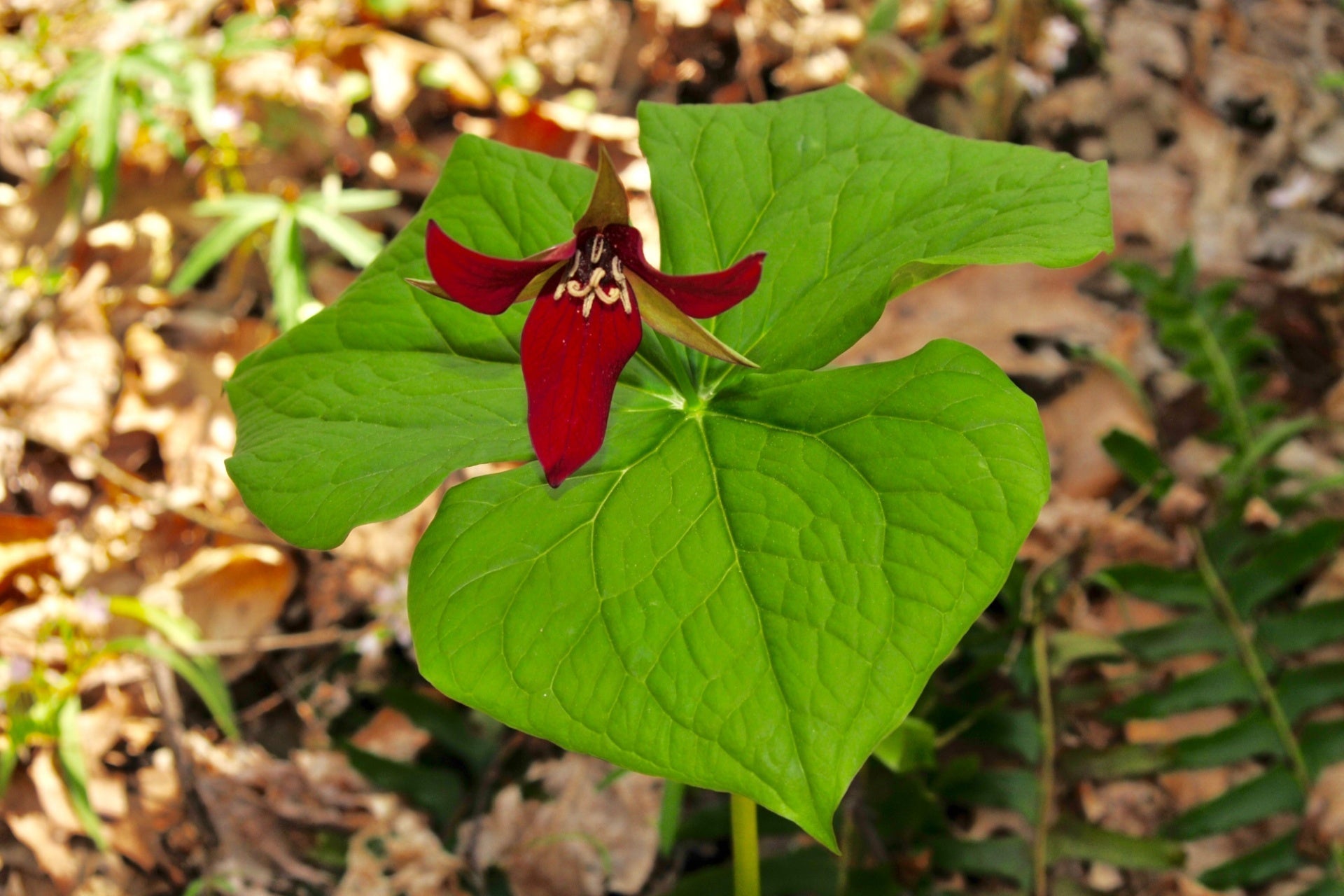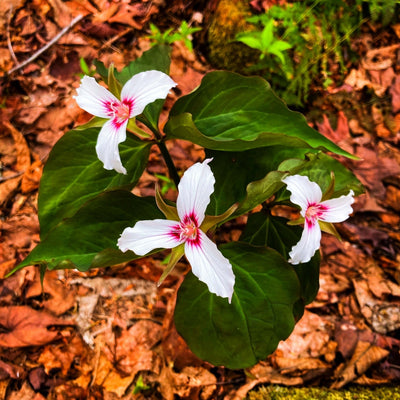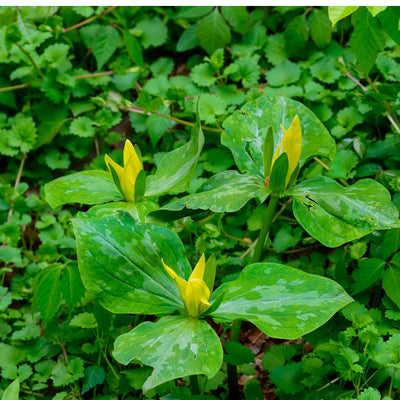The Red Trillium (Trillium erectum) is a beautiful natural wildflower that you can grow in a garden in the shade. The Red Trillium flower comes out every spring as a sign that nature is starting to wake up again. Its deep red petals and beautiful three-leaf shape make it stand out. This perennial does best in rich, moist, well-drained soil. It looks great in covered or partially shaded areas of the yard, where it adds natural beauty and bright colour.
The Red Trillium is a beautiful flower that grows naturally in the woods of North America. It also helps native insects and increases biodiversity. Because it can grow in a variety of natural woodland settings, it is one of the best shade-loving perennials for gardeners who value classic beauty.
What Does Red Trillium (Trillium erectum) Look Like?
In early spring, the Red Trillium flower is a beautiful sight. A single flower with three petals grows on each plant. It sits gently on top of a whorl of broad green leaves. Depending on the light and soil, the blooms can be anywhere from a deep burgundy red to a purple-maroon colour. The rich colour of the petals against the lush green of the leaves makes for a striking show that looks great in shady places.
For woodland borders, shaded rock gardens, or underplanting trees, this fragrant trillium woodland plant grows 12 to 18 inches tall. The flowers have a light, earthy smell that draws in early pollinators, like native bees and flies that do well in the spring.
The Red Trillium is a great choice if you like natural wildflowers that have unique colour and shape. It looks beautiful when paired with either the Painted Trillium or the Yellow Trillium because of their different colours and textures.
How to Grow Little Red Trillium
It's easy to learn how to grow Little Red Trillium once you know what kind of wild conditions it likes. This annual does best in places that are like its natural habitat—cool, shady, and damp forest floors.
Here's how to plant it and take care of it properly:
- Soil: Use dirt that has a lot of organic matter, drains well, and is high in humus.
- Light: Pick a spot with some to full shade to keep the leaves from getting too much sun.
- Water: Ensure the soil is damp but not soaked.
- Spacing: Place bulbs or rhizomes 8 to 12 inches apart to make room for good root growth.
-
Temperature: Trilliums like it cooler, and they stop growing in late summer.
If you take care of your Little Red Trillium woodland garden and wait, you'll soon see it come to life every spring with beautiful colour and natural grace.
Trillium Cuneatum Care Guide
Trillium cuneatum and Trillium erectum are two different kinds, but they need a lot of the same care. Any type of trillium can be grown successfully if you follow a good Trillium cuneatum care guide.
Important care tips:
- Don't upset established clumps; trilliums don't like being moved around a lot.
- Use compost or leaf mould to lightly fertilise in the early spring.
- Water when it's dry, especially when buds are starting to form.
- Use leaf litter to make a natural soil layer that looks like it's from a forest.
These actions will not only help your Red Trillium flower, but they will also help keep the soil healthy, which is important for fungi and microorganisms that are important for forest plants.
Why Add Red Trillium to Your Garden?
The Red Trillium is a great plant to have in your yard for many reasons. This plant is beautiful, tough, and good for the environment all in one lovely package.
Plant lovers love it because:
- Interesting for the season: The Red Trillium flower adds colour to early spring, when most other plants are still sleeping.
- Low Maintenance: Once it's established, it only needs to be watered once a year.
- Can handle shade: Great for places with little to no other flowers blooming in the shade.
-
Helps wildlife: It brings in flowers and gives good bugs a place to live.
It links your garden to the local ecosystem because it is a fragrant trillium woodland plant.
The Red Trillium and the Yellow Trillium are two of the best woodland plants that smell good and look nice in their natural state.
Little Red Trillium Woodland Garden Design Ideas
When you design a Little Red Trillium woodland garden, you want to make a space that looks and feels like a peaceful forest getaway. For a layered look that adds depth and visual interest, combine Red Trilliums with ferns, hostas, and wild geraniums.
For good design, use uneven shade to show off the deep red flowers and group several plants together for a natural look.
- Add a path with turns or a stone edge to give it shape
- Pair with white or yellow trillium plants for a striking contrast
This careful way of planting brings peace and balance to your garden, making it great for people who like using design to connect with nature.
Where to Buy Red Trillium?
TN Nursery has healthy Red Trillium plants and bulbs for sale. Care is taken to grow each plant so that it has strong roots and bright flowers. For a bright spring show, put it with other woodland favourites like the Painted Trillium.
To learn more about how to grow native forest plants, go to the USDA Native Plant Database and look at information about habitats and how to take care of plants.
FAQs
What is Red Trillium (Trillium erectum)?
The Red Trillium is a native plant that blooms in the spring. It is known for its deep red petals and unique three-leaf pattern.
How do you grow Red Trillium in your garden?
Follow the instructions on how to grow Little Red Trillium. It needs rich, wet soil, some shade, and the roots should not be disturbed.
What care does the Red Trillium flower need?
It doesn't need much care other than watering when it's dry and covering it with organic soil for safety.
Is Red Trillium a native woodland plant?
It is true that it is a fragrant trillium woodland plant that is indigenous to the woods of eastern North America.
Why is the Red Trillium a great choice for shade gardens?
It's a great addition to any Little Red Trillium woodland garden because it does well in shade and gives early spring colour.



